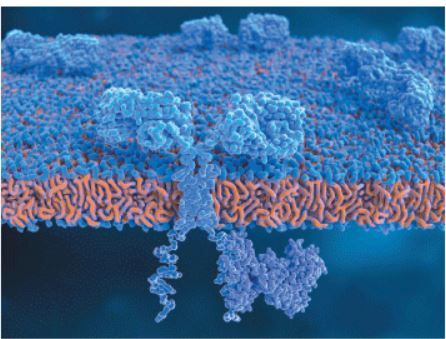Radioligand Therapy Retreatment Shows Promise in Metastatic CRPC
Results from a retrospective study show that 177Lu-PSMA-617 retreatment led to a median OS of 14.5 months in castration-resistant prostate cancer.
Results from a retrospective study show that 177Lu-PSMA-617 retreatment led to a median OS of 14.5 months in castration-resistant prostate cancer.

Retreatment with lutetium Lu 177 prostate-specific membrane antigen 617 (177Lu-PSMA-617; Pluvicto) showed that it may offer clinical benefit and was well tolerated in a small cohort of patients with metastatic castration-resistant prostate cancer (CRPC) who had sustained PSMA expression, according to results from a retrospective, single-center study shared at the 2025 Society of Nuclear Medicine and Molecular Imaging Annual Meeting.1
Previously, in March 2022, 177Lu-PSMA-617 was approved for adult patients with PSMA-positive metastatic CRPC who were treated with androgen receptor pathway inhibition and taxane-based chemotherapy.2 More recently, in March 2025, the approval was expanded to include patients with PSMA-positive metastatic CRPC who have been treated with androgen receptor pathway inhibitor therapy and are considered appropriate to delay taxane-based chemotherapy.3
Initial radioligand therapy led to a complete/partial response (CR/PR) rate of 60%, a progressive disease rate of 25%, and a stable disease rate of 15%. Following retreatment, the CR/PR rate was 50% and the progressive disease rate was 50%.
The median prostate-specific antigen progression-free survival was 9.6 months (range, 1.4-28.0). The median overall survival (OS) from initial treatment was 46.8 months (range, 16.9-78.5), and the median OS from retreatment was 14.5 months (range, 1.4-27.6).
“177Lu-PSMA-617 retreatment is generally well tolerated and may offer clinical benefit in select patients with sustained PSMA expression, though efficacy may be limited compared with the initial course of [radioligand therapy],” stated presenting study author Gokce Belge Bilgin, MD, of the Department of Radiology at the Mayo Clinic in Rochester, Minnesota, in the presentation. “With expanded FDA approval, 177Lu-PSMA-617 will likely be used earlier in the metastatic CRPC treatment course and more patients [will] become candidates for retreatment.”
Investigators of this retrospective analysis enrolled a total of 20 patients who received treatment at the Mayo Clinic from March 2018 to December 2024. Those who were eligible completed at least 2 initial cycles of 177Lu-PSMA-617, had persistent PSMA expression on baseline imaging before retreatment, and had adequate bone marrow, renal, and hepatic function.
The median age of patients was 71.3 years (range, 63.7-95.2), the median Gleason Score was 8 (range, 7-10), and 95% of patients had an ECOG performance status of 0 or 1.
The mean follow-up time was 46.8 months (SD, 20.4), and the mean interval time was 28.8 months (SD, 17.9); initial radioligand therapy lasted for a median of 4.5 cycles (range, 2-6), rechallenge radioligand therapy lasted for a median of 4.0 cycles (range, 2-6), and the median total cumulative activity was 59.2 GBq (range, 29.6-88.8).
The lymph nodes (95%) and bone (85%) were the most common sites of metastases. Most patients had more than 10 bone lesions (42%), and the most common prior systemic therapies were androgen deprivation therapy (100%), chemotherapy (100%), and androgen receptor pathway inhibitors (90%).
Regarding safety, renal impairment occurred in 9 patients during initial therapy, all Common Terminology Criteria for Adverse Events (CTCAE) grade 1, and in 7 patients during retreatment, with 1 case of CTCAE grade 2. Leukopenia occurred in no patients during initial therapy and 1 patient during retreatment; thrombocytopenia occurred in 1 patient in both groups, with both cases being CTCAE grade 1. Anemia occurred in 5 patients during initial therapy, with 1 case being CTCAE grade 2, and in 14 patients during retreatment, with 3 cases being CTCAE grade 2.
Noted trial limitations were that the retrospective design may have introduced selection bias, the relatively small sample size limited generalizability, and the follow-up duration may have been insufficient to assess long-term outcomes and late toxicities.
Currently, the phase 2 RE-LuPSMA (NCT06288113) and ReaLuP (NCT06866938) trials are evaluating retreatment outcomes in a prospective setting.
References
- Bilgin GB, Bilgin C, Packard AT, et al. Outcomes of [177Lu] Lu-PSMA-617 re-treatment in metastatic castration-resistant prostate cancer patients: single center experience. Presented at: 2025 Society of Nuclear Medicine and Molecular Imaging Annual Meeting; June 21-24, 2025; New Orleans, LA.
- FDA approves Pluvicto for metastatic castration-resistant prostate cancer. FDA. March 23, 2022. Accessed June 23, 2025. https://tinyurl.com/46etv4wb
- FDA expands Pluvicto’s metastatic castration-resistant prostate cancer indication. FDA. March 28, 2025. Accessed June 23, 2025. https://tinyurl.com/y77tmenc
Newsletter
Stay up to date on recent advances in the multidisciplinary approach to cancer.